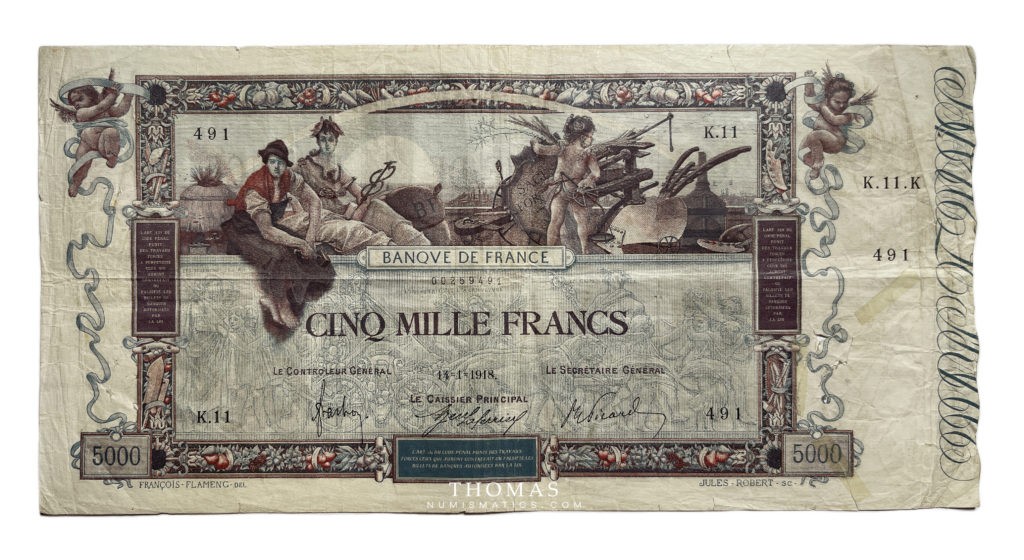
Discover all the news and articles from TNUMIS Magazine exclusively
Albert Pick
Albert Pick was born in 1922 in Cologne and died in 2015 at the age of 93. He was a famous numismatist, and more specifically, a banknote specialist. He became one of the most renowned German banknote collectors and is widely recognized for establishing the modern face of banknote collecting.
The numismatist Albert Pick
Passionate about numismatics, he began his collection as a child, at the age of eight. In 1930, he exchanged two banknotes for a pfennig, a subdivision of the Deutsche Mark. From then on, he became interested in numismatics and the history of countries around the world.
During the Second World War, he was a prisoner of war. He then lived in the United States for a year. When he returned to Germany, he began to study the history, literature and philosophy of his country. He then directed the university press in Cologne. At the same time, he continued to collect banknotes. He eventually devoted himself completely to the study of paper money and became a recognized expert. In 1964, his private collection became too large for him to manage alone. He decided to put his collection of 180,000 banknotes in a safe place at the Bavarian Mortgage and Exchange Bank in Munich. The bank offered him the job of curator of his large collection. He held this position from 1964 to 1985. During all these years, he never stopped adding to the collection. In 2003, the collection had more than 300,000 banknotes and was integrated into the HBV Stiftung Geldscheinsammlung and the National Coin Collection of Munich.
The author Albert Pick
Albert Pick was not only a collector but also an author of books on the subject of paper money. He wrote, among others, Papiergeld in 1964 and the banknote catalog Europe since 1900 in 1970. He received several international awards and distinctions for his publications.
His most famous work is undoubtedly Standard Catalog of World Paper Money, the first modern catalog of banknotes. Published in English in 1974, this work has contributed greatly to numismatics and to the international recognition of the work of the numismatist. This book became the reference catalog for banknote collectors.
He created the Pick numbering system which allows to identify and catalog each banknote. Many coin collectors still use this system today to determine the value of a banknote.

An article in the New York Times, published on July 10, 1977, reviewed the introduction of the second edition of the Standard Catalog of World Paper Money. The reporter notes several important points in Albert Pick’s speech:
- The book brings together bills from 271 governments over a period between the 1700s and 1976. Albert Pick provides several tools to help recognize bills from around the world to read dates and find their way through the different calendars. For example, he provides a dictionary that gives the translations of the months into different languages or the international numbers, as well as the exchange rates, current in 1976.
- At the beginning of the catalog, an illustrated notation guide helps the collector to determine the quotation of a banknote. The author emphasizes the fact that a banknote can be of poor quality and still have a good grade;
- Albert Pick spotlights the importance of themes in collections. The states were incorporating more and more motifs into their banknotes at the time, which clearly contributed to the growth of collections related to the objects represented on the banknotes. For example, birds are present on New Zealand coins, animals on some African banknotes, flowers on Israeli and Indonesian banknotes, or else means of transportation such as trains, boats or bridges on Canadian, Chinese, Tunisian banknotes, etc.;
- One chapter focuses on the history of paper money. Albert Pick talks about its birth in China in the 7th century.
- He also discusses the counterfeiting of ancient banknotes. According to him, the counterfeit can sometimes have more value than the original; ormous contribution to the world of numismatics.
The New York Times calls this book “the most comprehensive global reference on paper money ever assembled”. This article confirms the importance of this man’s work and his enormous contribution to the world of numismatics.
Sources :
La maison du collectionneur
Wikipédia
The New York Times
Academic


